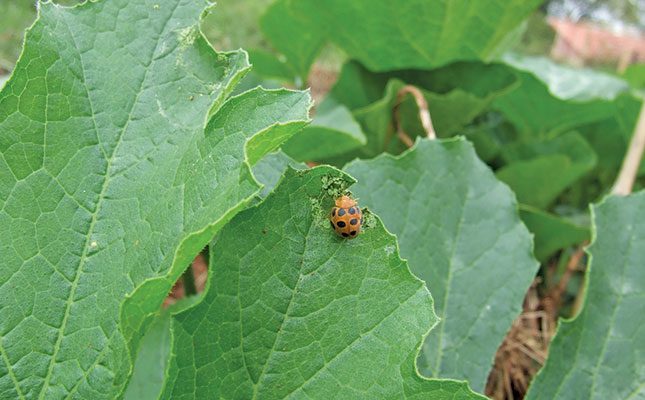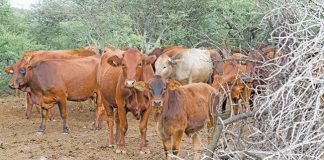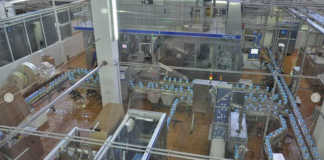
Photo: Bill Kerr
This article explores three pests of cucurbits that are of lesser importance, but that nonetheless are still threats to be taken seriously.
Leaf miner
The main leaf miner in South Africa is Liriomyza huidobrensis, and when it first appeared in South Africa it created alarm. I even found the larvae burrowing down the stems of newly emerged seedlings.
Fortunately, parasitoids (parasitic wasps) can keep this pest largely under control, provided they are allowed to do so! I have seen L. huidobrensis inflict substantial damage on farms where a harsh chemical is used to kill it, because the same spray then also kills the parasitoids.
The solution to the problem is to use a soft insecticide which may do some damage to the parasitoids but which has the potential to reduce the population of leaf miner sufficiently to allow the parasitoids to increase at a faster rate and then achieve complete control. One such product which I have successfully used for this purpose is abamectin.
If you find leaf miner tunnels developing on your crop, be patient and observe the leaf miner population to see whether the pest is decreasing or increasing before taking any action. Also look out for the minute wasps that might be scouting for tunnelling leaf miner.
If you see any, you can relax.
Bear in mind, too, that this pest has a host of different species that it can feed on and as many are in the wild, the parasitoids will be there as well. It is only a matter of time before the wasps will begin to control the pest.
Cucurbit ladybird beetle
This is an imposter as it looks very much like the ladybird beetle that is famous for controlling aphids. It is larger than the beneficial species and has less of a sheen.
Many farmers are also aware of the potato ladybird beetle which is also a vegetarian and can do much damage to potatoes and beetroots.
Farmers who have experienced damage from the potato ladybird need not be alarmed when they see the odd beetle on the foliage of their cucurbits. The two species (potato ladybird and cucurbit ladybird) look very similar but whereas the former is black with orange spots, the latter is orange with black spots.
Cucurbit beetles feed on the leaves and lay their eggs, which are yellow, in clusters on the underside. The larvae, which are spiky in appearance, remain on the underside of the leaves and feed in a distinctive pattern like the adults. I always find a few of these beetles on my cucurbits but never in sufficient quantities to justify control measures. Sometimes, however, control may be necessary.
African bollworm
This well-known pest has a great many host plants on which it can feed. It therefore has the potential to breed at a high rate and produce a large population that causes much damage.
Typically, the night-flying moths lay their eggs on the tender new growth of plants. They therefore lay their eggs on the tips of the runners. In large numbers they can do serious damage.
This pest tends to arrive in waves, which means that you may indeed have to take measures to control it. With cucurbit species that have runners, such as butternuts and pumpkins, you can simply spray the ends of the runners. A knapsack sprayer is ideal for this purpose.
Bill Kerr is a vegetable specialist and breeder.











